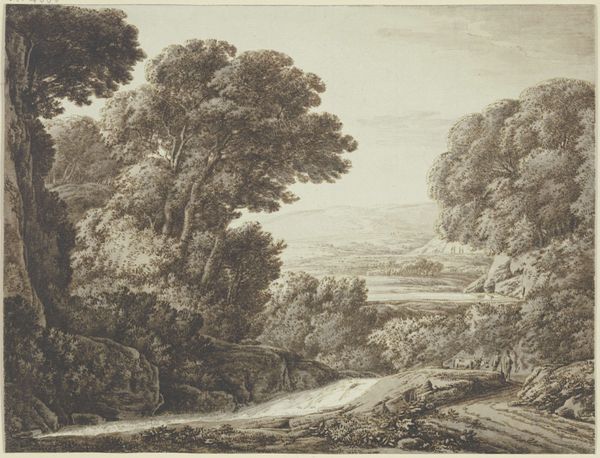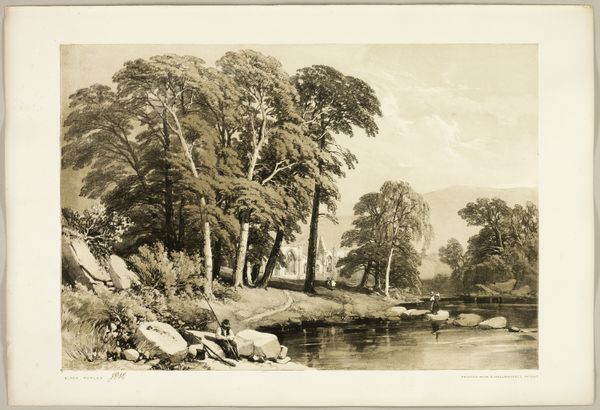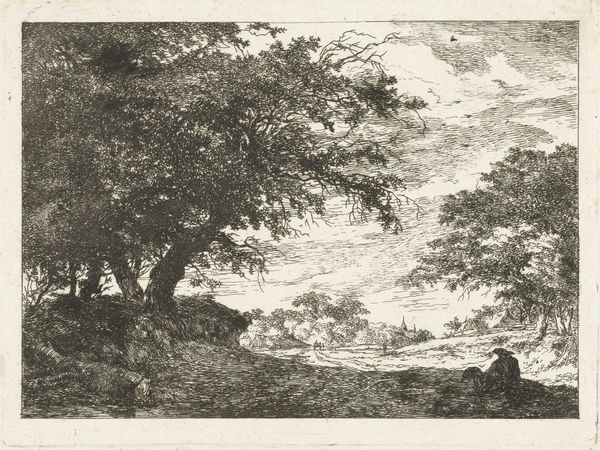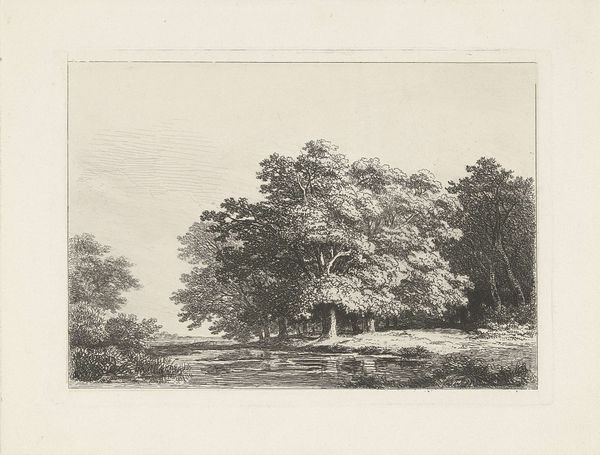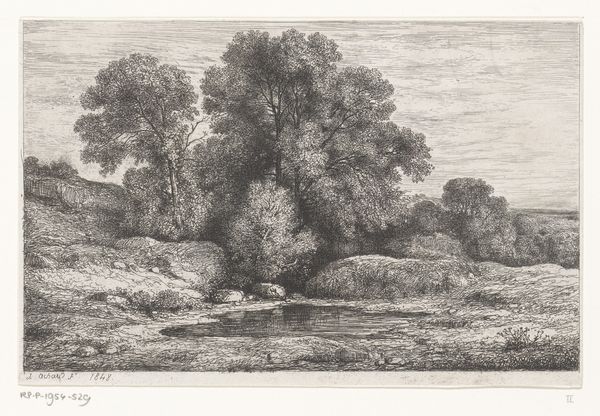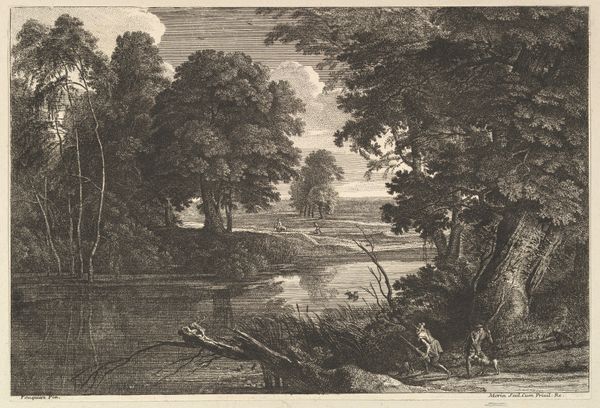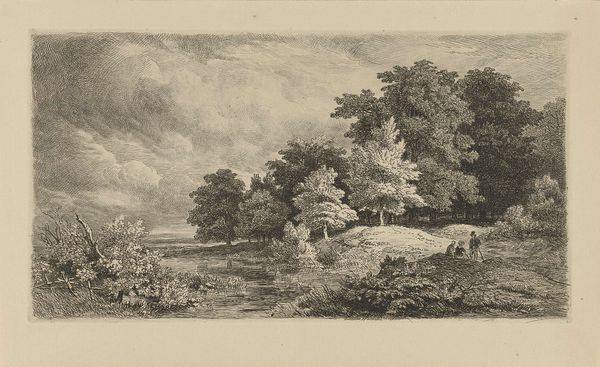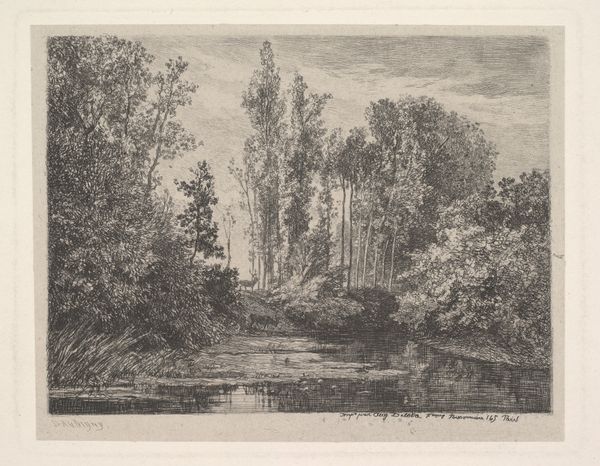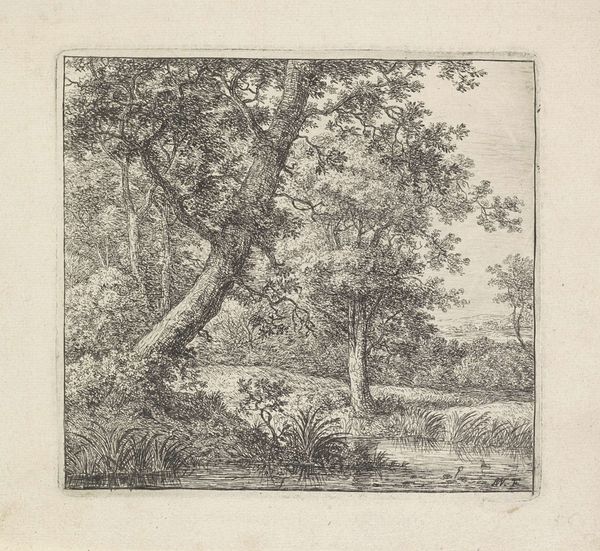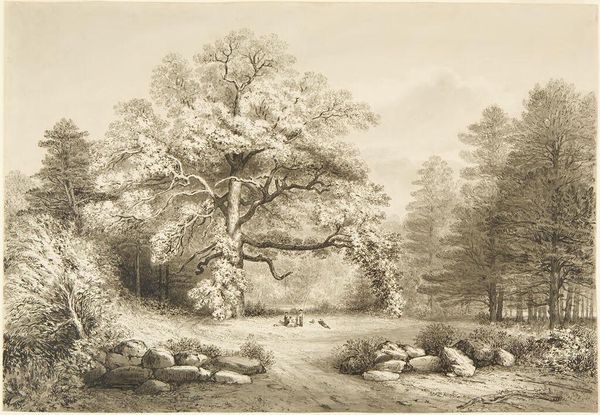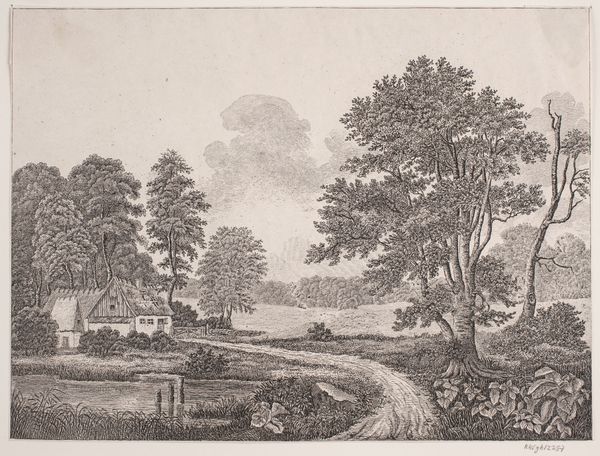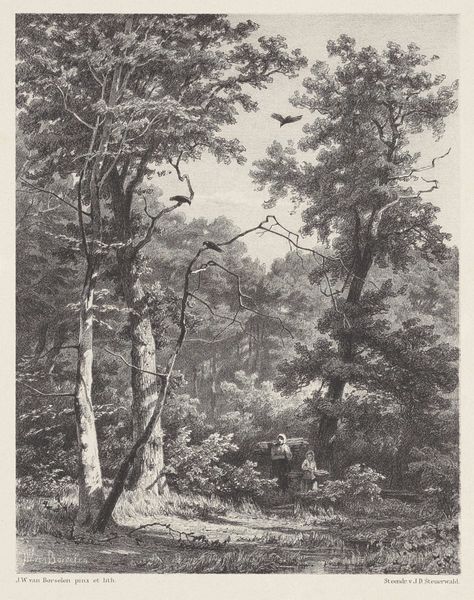
# print
#
landscape
#
realism
Dimensions: 175 mm (height) x 228 mm (width) (billedmaal)
Editor: Here we have J. Hildebrand’s "Ved en mølledam. Sommer-formiddag," or "By a Millpond. Summer Morning," a print from 1881. It strikes me as a really serene depiction of nature, but I wonder… what do you see in this piece? Curator: I see a constructed serenity. Consider the social context of landscape art in 1881. Who had access to such pastoral scenes, and whose labor made that leisure possible? This image invites us to consider issues of class and access to nature. Do you think this idealized image reflects reality, or is it masking a more complex truth? Editor: I suppose I hadn't considered that. It does seem very picturesque. So, you’re suggesting it’s more about a privileged viewpoint than objective representation? Curator: Precisely. Realism, as a style, is always mediated by power. Look closely at the composition—the placement of the trees, the light. It's all carefully arranged to present a particular view of nature: one of tranquility and abundance. But what about the unseen laborers who maintained these landscapes, the social inequalities inherent in land ownership at the time? What are your thoughts on how landscape art either challenges or perpetuates such imbalances? Editor: It’s forcing me to rethink the entire genre, really. It's easy to get lost in the pretty image and miss the critical questions it raises. Thank you! Curator: Indeed. And that’s why art history can be such a potent tool for social critique: it helps us unmask the power dynamics hidden beneath the surface of beauty.
Comments
No comments
Be the first to comment and join the conversation on the ultimate creative platform.
